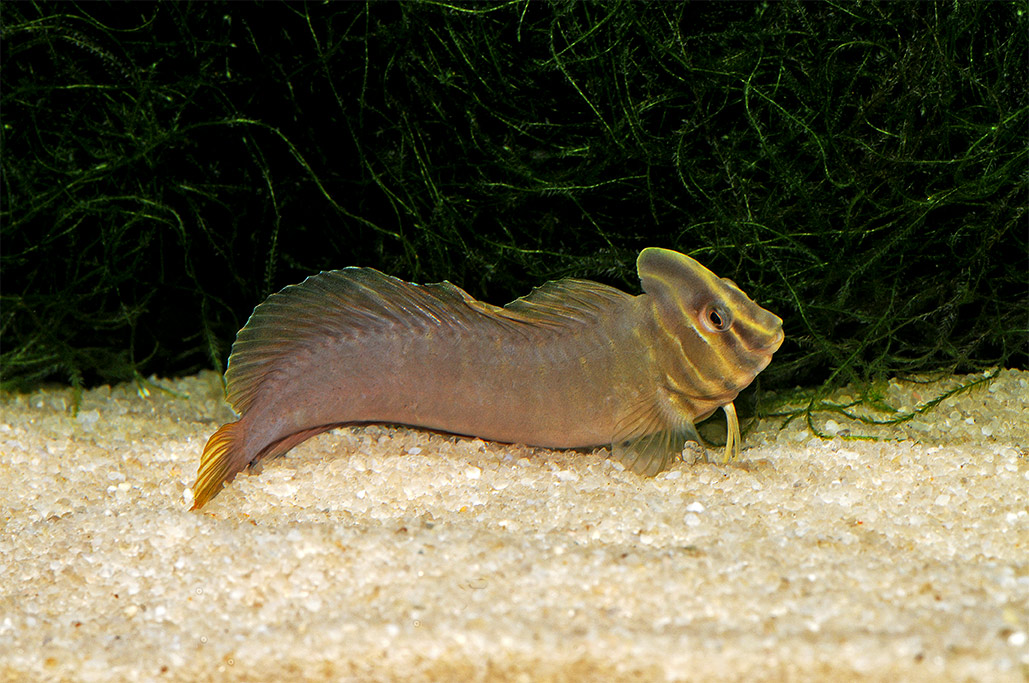Well,Please explain how a fish can live in pH 5.5-7.5. I don't think that is possible
Exodons are collected in PH as low as 5.5, and are found in PH up to 6.8. However, these fish are very hardy, and have been known to have PH up to 7.5
Well,Please explain how a fish can live in pH 5.5-7.5. I don't think that is possible
I do the ones that I have not kept, but have researched. I normally call my lfs owner who is a hardcore fish keeper, and get his opinion on these fish. Don’t worry.have you kept all of these fish before or at least have some experience with them?
I hate when "trusted sources" are parroted and spread as truth, when a lot of the time, it's false information





Cool fish!!We’ll kick day #6 off with a Nano fresh, brackish, and saltwater blenny!
Day #6 (11/10/21
Top Hat Blenny
Omobranchus fasciolatoceps
View attachment 147543
Size: rarely exceed 2.5”
pH: 7.0-8.5
Tank size (in gallons): 20g
Country of origin: Southern Japan, Hong Kong, and Taiwan
Diet: Insects and Crustaceans (a micro-predator). In captivity, they will accept most frozen food
Temperament: Peaceful but territorial
Nitrate: <30ppm
Salinity: 0-20 (does best in 0-15)
Fished for: No
Status: Least Concern
Harmful to humans: Harmless
Description:
This is one of the few species of Combtooth Blenny that inhabit fish and brackish water. They inhabit estuaries and mangrove forests, but most are collected in slightly brackish to freshwater areas. There have been a few records of breeding. They are substrate spawners, and larvae are planktonic. Read about the breeding on my first recourse. They are often marketed as ‘freshwater blennies’. These fish are hardy, and will survive through tough shipments, cold temperatures, and more.
Where you can find them:
As always, aqua-imports has them. Specialty saltwater stores may have them, but those will be collected in fully saltwater or high brackish areas.

Top Hat Blenny (Omobranchus fasciolatoceps)
Originating from the coastal waters of Western India and Bangladesh, the Indian Zebra Blenny is one of a very few species of Blenny thatwww.aqua-imports.com
Recourses:

First Captive Breeding of the "Freshwater" Top Hat Blenny - AMAZONAS Magazine
Pei-Sheng Chiu, an assistant researcher at the Mariculture Research Center, Fisheries Research Institute, Taiwan, documents the captive spawning & rearing of this species known for very "flexible" salinity requirements.www.amazonasmagazine.com

Omobranchus fasciolatoceps - Wikipedia
en.wikipedia.org

Omobranchus fasciolatoceps summary page
www.fishbase.se
Top Hat Blenny (Omobranchus fasciolatoceps)
Originating from the coastal waters of Western India and Bangladesh, the Indian Zebra Blenny is one of a very few species of Blenny thatwww.aqua-imports.com
Many thanks for your answer MonsieurNannaLou your questions about PH/ acidity/alcaline are chemistry what is known not to be an easy stuff and you will learn it all with a little time, most important now is what kind of fish do you want to keep in your aquarium and to get the information about which PH etc they would like to have, never buy a fish if you don't know this exactly! Acidity and low PH results of water that don't has got lime in it so to speak but a lot of organic stuff like vegetables residues as for example in the rain forest rivers occurs, that's also sooft water without minerals in it, alcaline is the contrary, with lime and most many minerals in it, hard water with a high PH, it's chemistry and you know that's not easy at all, nor for me, don't worry.
Please explain how a fish can live in pH 5.5-7.5. I don't think that is possible



Maybe do a monster one and then do another nano... I'm loving this thread!! Keep posting! (Although if you need a break I'll understand)Yeah,
What do you guys want more of? Nano Oddballs? Small Oddballs? Monster Oddballs? Specifically from south america? aggressive? Peaceful? ones eating live food? cold water? What do you guys want?
Good to knowMaybe do a monster one and then do another nano... I'm loving this thread!! Keep posting! (Although if you need a break I'll understand)
Arowana? (Idk if that is from the Amazon) Is it a catfish? Eel? The Amazon river has so many fish! Plus its my favorite jungle!Good to know
I enjoy doing this.
The next one is from the amazon river. It is large. Take a guess!
